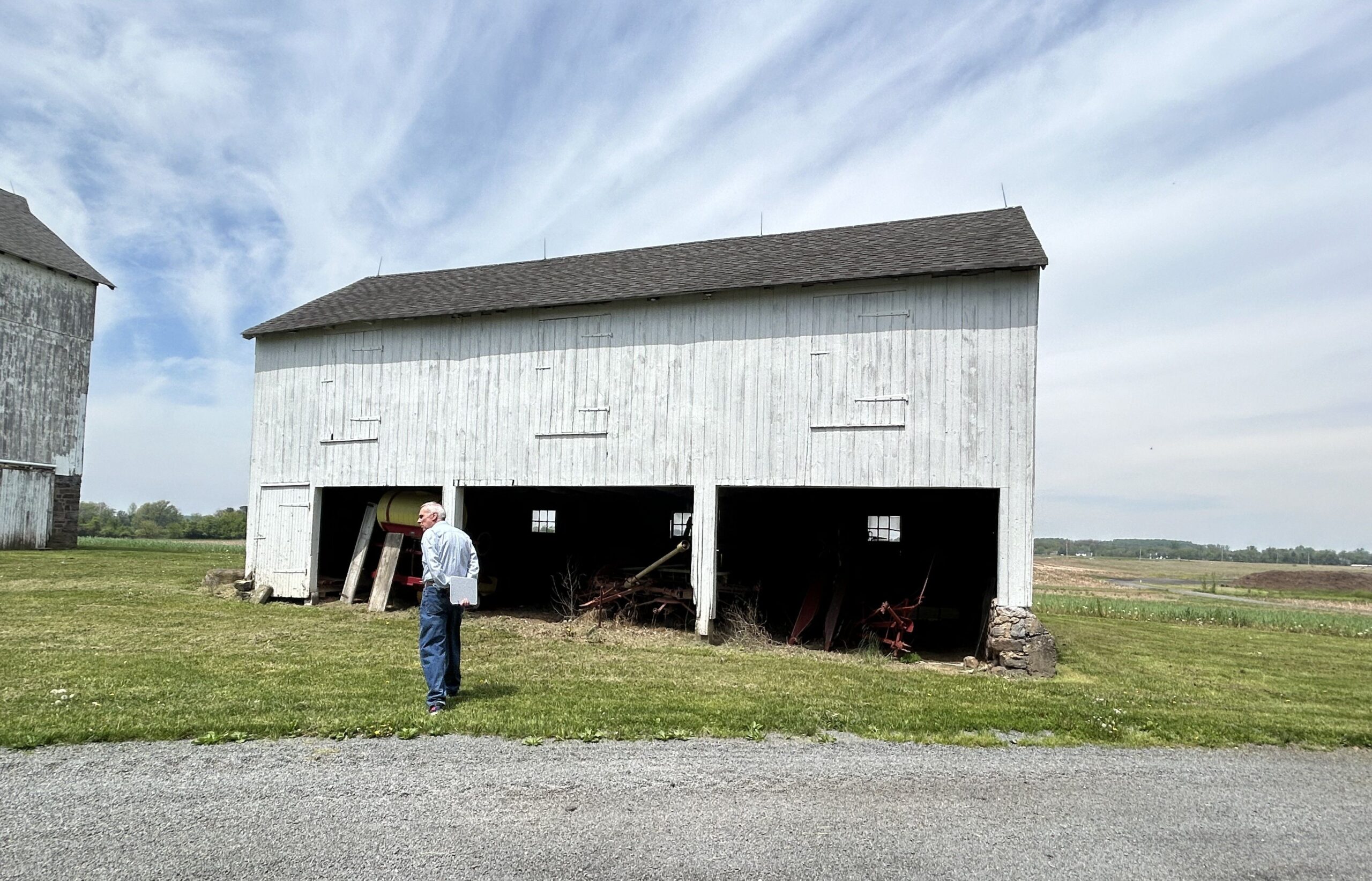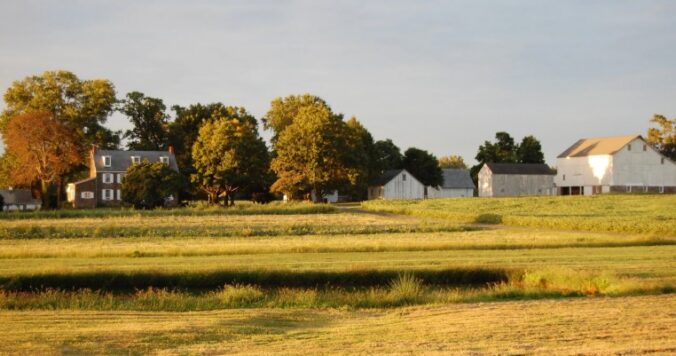Pennsylvania has 49 Certified Local Governments, one of which is Lower Makefield Township in Bucks County. The Certified Local Government (CLG) program is a partnership between municipal governments, the Pennsylvania State Historic Preservation Office (PA SHPO), and the National Park Service (NPS) that promotes and supports effective historic preservation programs and policies in Pennsylvania municipalities.
Among other things, CLGs are required to enact a historic preservation ordinance and appoint a preservation commission or Historic Architectural Review Board (HARB) to administer the preservation ordinance. Members of the commission and HARBS are required to complete at least four hours of continuing education and training and can use CLG mini-grants from PA SHPO for financial support.
Recently, Joe Camaratta, Vice President of Lower Makefield Township Historical Commission, applied for a CLG mini grant to support continue education in the form of a degree level course in historic preservation. We requested that he share his experience in that course. Below is his post about the skills and value of learning to read the built environment.
Learning to Read the Built Environment
Taking The History of American Architecture as part of the Historic Preservation program at Bucks County Community College was a transformative experience for me—not just academically, but practically and professionally. The course gave me a comprehensive understanding of how architecture in the United States evolved from Indigenous traditions to the built environments we live in today. More importantly, it helped me see how architecture reflects social, economic, and technological change over time – and why preserving built history matters.

The author at Patterson Farm. Photo by Megan McNish, PA SHPO.
The course took a chronological approach, beginning with Indigenous architecture and progressing through colonial, federal, Victorian, industrial, modern, and contemporary styles. Along the way, I learned to recognize and describe architectural features—rooflines, window types, construction materials, and stylistic elements—and how to place buildings within a timeline of design evolution.
But this wasn’t just about naming styles. I came to understand how buildings are shaped by their context: available materials, climate, regulations, transportation networks, and shifting cultural expectations. We looked at how nail types, framing methods, and millwork reveal clues about when and how a building was constructed. I now walk past buildings and can “read” them with a new level of insight—seeing not just their aesthetic, but their embedded history.
A Focus on the Mid-Atlantic and Pennsylvania
What made the course especially relevant to me was its emphasis on regional variation. The mid-Atlantic—and Pennsylvania in particular—stood out in many ways. William Penn’s “Greene Countrie Towne” of Philadelphia was one of the first planned cities in America, and its rational grid and civic spaces shaped the form of urban design across the country.
In rural Pennsylvania, I gained new appreciation for the region’s vernacular architecture: the stone houses and barns, Germanic log dwellings, and the mill buildings that dot the landscape. These weren’t “high-style” buildings by architects—they were the work of local craftspeople responding to available resources and cultural traditions. I now see these everyday structures as vital to understanding our shared heritage.
The course also highlighted how Pennsylvania played a key role during the Industrial Revolution, with cities like Pittsburgh and Philadelphia becoming architectural laboratories—from cast-iron facades to early skyscrapers. Understanding these buildings in their historical context helped me see how they contributed not just to architectural innovation, but to social and economic transformation.
Hands-On Learning and Preservation Practice
One of the most valuable parts of the course was the final project, which involved selecting and documenting a building in my own community. I chose the Janney-Brown farmhouse on Patterson Farm due to its vernacular roots. Using tools like Henry Mercer’s The Dating of Old Houses and Lee Nelson’s Nail Chronology, I examined the materials and construction techniques and began to see how this seemingly ordinary house reflected changes in architectural preferences, the local economy, and domestic life.

The Janney-Brown House. Photograph used by permission of author.
We were encouraged to treat the building as a primary source—an object of study through observation. This method helped me focus on what the physical form could tell me: its alterations over time, its placement in the township, and how it embodied social values of its era. It also made me realize how much preservation work starts not with archives, but with paying attention.
Why It Matters
For anyone working in historic preservation this course is essential. It gave me the vocabulary, the historical grounding, and the analytical skills to advocate for buildings that may not yet be widely recognized as “historic,” but that tell important stories. In southeastern Pennsylvania, that might mean recognizing the significance of a fieldstone farmhouse, a row of 1930s worker cottages in an industrial town, or an early suburban neighborhood.
The course also sharpened my awareness of preservation challenges: how survivorship bias affects what we think of as “typical,” and how race, class, and policy influence which buildings get saved. It underscored the importance of including vernacular buildings and marginalized communities in preservation efforts.
Looking Forward
The History of American Architecture was more than a class—it changed how I see the world around me. It helped me see buildings not just as static objects, but as living documents of human experience. And it gave me the tools to engage in thoughtful, informed preservation work rooted in regional history.
Whether I’m walking through an old industrial neighborhood in Philadelphia or a small town in Bucks County, I now carry with me the ability to see, interpret, and advocate for the architecture that tells our collective story. That’s a skill that I’ll carry with me for life.
__________________
Today’s Guest Contributor is Joe Camaratta, Vice Chair of the Lower Makefield Township Historical Commission and Patterson Farm Master Plan Implementation Committee. Joe, along with other members of the Historical Commission, was instrumental in the rehabilitation of Slate Hill Cemetery—a 2023 Community Initiative Award winner.
Comment Policy
PHMC welcomes and encourages topic-related comments on this blog. PHMC reserves the right to remove comments that in PHMC’s discretion do not follow participation guidelines.
Commenters and Comments shall be related to the blog post topic and respectful of others who use this site.
Commenters and Comments shall not: use language that is offensive, inflammatory or provocative (this includes, but is not limited to, using profanity, obscene, or vulgar comments); disparage other commenters or people; condone illegal activity; identify the location of known or suspected archeological sites; post personal information in comments such as addresses, phone numbers, e-mail addresses or other contact details, which may relate to you or other individuals; impersonate or falsely claim to represent a person or an organization; make any commercial endorsement or promotion of any product, service or publication.
If you would like to comment on other topics not related to this blog post but related to PHMC, please fill out the PHMC Contact Us Form.

Leave a Reply